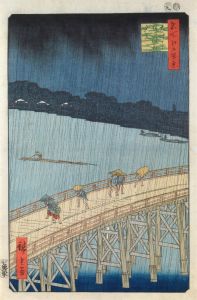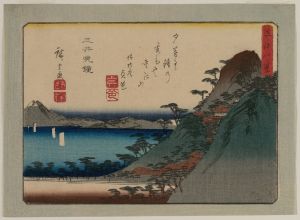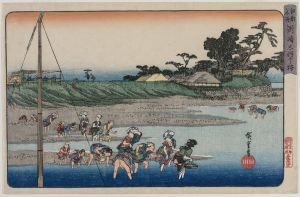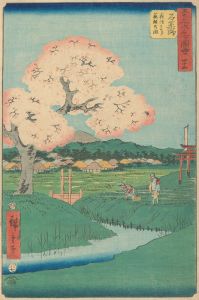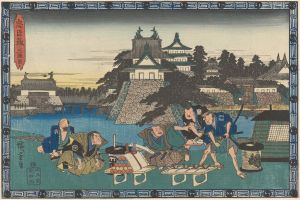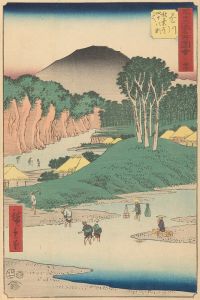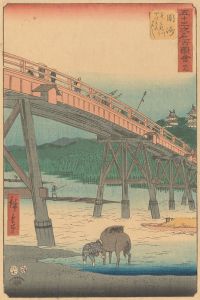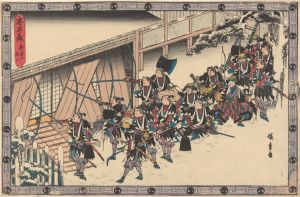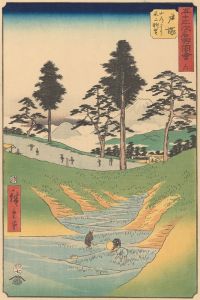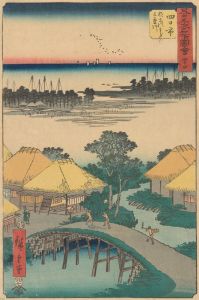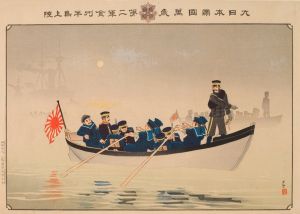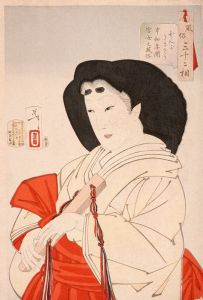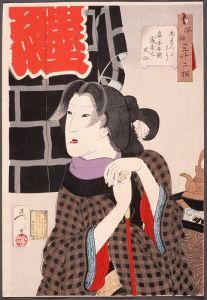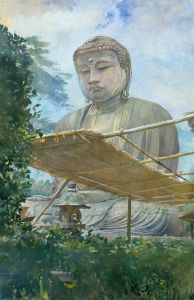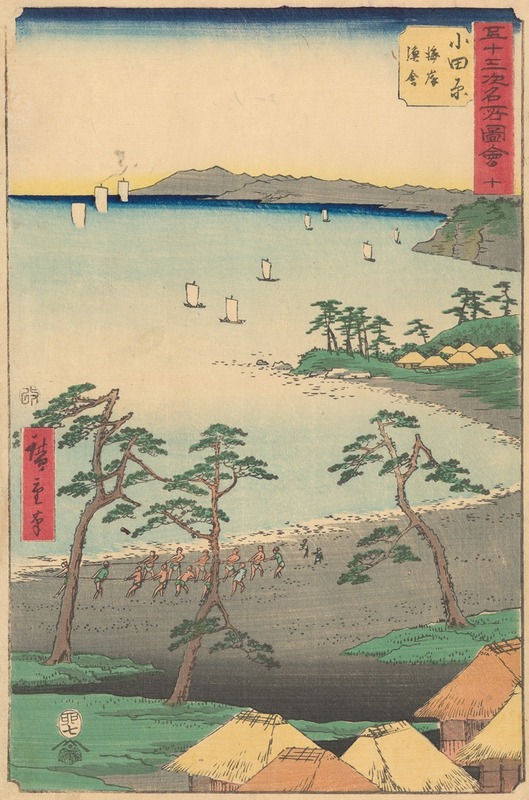
Odawara
A hand-painted replica of Andō Hiroshige’s masterpiece Odawara, meticulously crafted by professional artists to capture the true essence of the original. Each piece is created with museum-quality canvas and rare mineral pigments, carefully painted by experienced artists with delicate brushstrokes and rich, layered colors to perfectly recreate the texture of the original artwork. Unlike machine-printed reproductions, this hand-painted version brings the painting to life, infused with the artist’s emotions and skill in every stroke. Whether for personal collection or home decoration, it instantly elevates the artistic atmosphere of any space.
Andō Hiroshige, a renowned Japanese ukiyo-e artist of the Edo period, is celebrated for his landscape prints and depictions of famous places. One of his works, "Odawara," is part of his acclaimed series The Fifty-Three Stations of the Tōkaidō (Tōkaidō Gojūsan-tsugi), which he created after traveling along the Tōkaidō road in the early 1830s. This series, consisting of 55 woodblock prints, illustrates the post stations along the Tōkaidō, the main route connecting Edo (modern-day Tokyo) to Kyoto. The series is widely regarded as a masterpiece of Japanese art and a significant contribution to the ukiyo-e tradition.
The print "Odawara" represents the ninth station on the Tōkaidō road, located in present-day Kanagawa Prefecture. Odawara was historically significant as a castle town and a key stop for travelers during the Edo period. The town was known for its strategic location near Hakone and its proximity to the Hakone Pass, one of the most challenging sections of the Tōkaidō route.
Hiroshige's depiction of Odawara captures the natural beauty and atmosphere of the area. The composition typically features travelers making their way along the road, with the Sagami Bay or the surrounding mountainous landscape in the background. Hiroshige's use of perspective, color, and detail conveys a sense of movement and the experience of travel during the Edo period. His ability to depict the changing seasons and weather conditions adds depth and emotion to the scene, reflecting the artist's keen observation of nature and daily life.
The Tōkaidō series, including "Odawara," was produced using the traditional woodblock printing technique. Hiroshige collaborated with skilled carvers and printers to bring his designs to life. The prints were widely popular during his time, as they offered an affordable way for people to appreciate art and learn about the famous sights along the Tōkaidō road.
"Odawara" and the other prints in the series not only serve as artistic works but also provide historical insights into the culture, geography, and travel practices of the Edo period. Hiroshige's ability to blend artistic expression with documentary detail has made his works enduringly popular, both in Japan and internationally. Today, his prints, including "Odawara," are held in museum collections and continue to be studied and admired for their artistic and historical significance.





